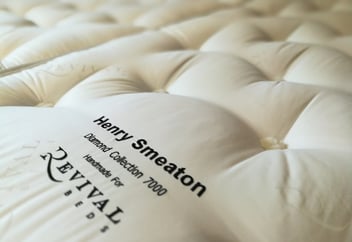Where Did Cotton Come From And How Is It Produced?
Cotton was first cultivated around 7000 years ago in the Indus Valley in what is now Pakistan. The important point to remember here is that the cotton wasn't just wild but was cultivated. It an industry which was to spread globally. Cloth weaving and fabric manufacture spread throughout India and across to the Mediterranean countries over the centuries. This state of affaires remained through to the Middle Ages however cotton farming did spread to the Americas where it was also widely grown and processed.
Cottonopolis
Right up to the late medieval period cotton was an imported product in northern Europe with little knowledge of how it was actually produced. But things were changing. The East India Company had a hold over India to the extent that although the cotton was grown in India it was against the law to process the raw cotton into cloth. This processing would be moved to the industrial mills of England and specifically Manchester (which was nicknamed 'cottonopolis'). With the industrial Revolution in full flow England became the worlds leading exporter of cotton fabric without actually growing any cotton. With all the machinery to speed the processes the only thing needed was a ready supply of cotton.
Fortunes won and lost
From then on the fortunes of people, businesses, banks and even countries were decided on where cotton came from. During the American civil war blockades denied the British the raw cotton from the southern states needed to keep the factory wheels turning. Egyptian cotton plantations were expanded with huge loans from European banks being invested only for the market to return to to the America once the civil war was over; Egypt was left bankrupt.
For years and years before the American civil war much of the cotton was picked by slave labour in the south but the end of the war saw share croppers both black and white farming and providing much of the raw cotton for the waiting mills.
The 21st century
Globally the early 20th century saw this highly labour intensive industry change yet again. Machines were taking the place of people. The delicate bolls of cotton once picked by hand were mechanically harvested and processed. The invention in the early 19th century and development of the cotton 'gin' was central to this. Its the machine used to gently separate the cotton from the unwanted seeds.
These days the top cotton producers are China, USA, India, Pakistan and Brazil with China producing most. The main uses for cotton range from textiles including clothes and bedding to unusual applications like fishing nets to coffee filters. Cotton is also mixed together with synthetics like rayon and polyester to create hard wearing fabrics.
No alternative to luxury cotton
Over the past 7000 years cotton has been central to creating economies, supporting civilisations and cultures. It's started wars and ended wars. Lost fortunes and made fortunes. Bankrupted countries and built economies. It's a staple crop for many countries and up to yet no man-made alternative has come close to replacing it, it remains a unique commodity... Sleep tight.
Request Your Free Brochure
Revival Beds have been handcrafting solid wooden beds and bedroom furniture in their Nottinghamshire workshops since 1983.
To find out more about their collection of luxury bedding,that is available up to 1000 thread count - request your free brochure by clicking on the link below.






